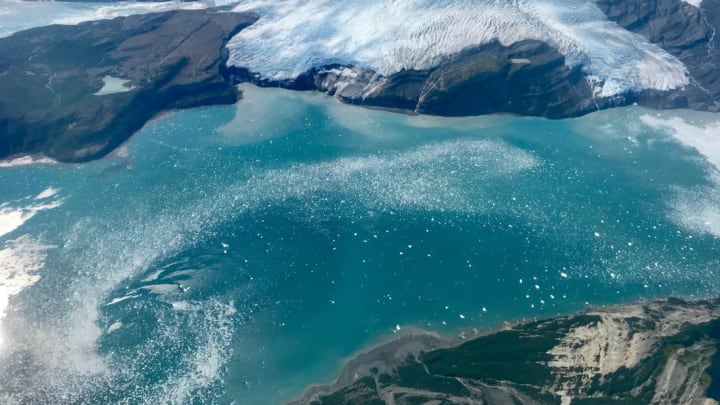Most of us have been taught the basics of the greenhouse effect: The sun shoots its rays through the atmosphere (or ozone holes); those rays bounce off the Earth's surface and, when they try to escape back into space, are trapped by carbon dioxide, methane, and other heat-trapping gases. Release too many of these so-called greenhouse gases, repeat the process, and voila! You have global warming.
A slightly warmer globe will not necessarily change the climate. Heat the planet enough, however, and you get lots of wild, indirect consequences—which scientists like to put under the blanket term climate change. While global warming is a specific function of these trapped gases, climate change is just more complicated.
Ocean acidification is one clear example of climate change that isn’t at all part of global warming. Sure, the surface temperature of the ocean is getting warmer, salinity is changing due to ice melt, and the sea levels are rising. All of this can be attributed to a warming planet. But oceans also store half of all the carbon released by man and nature. A side effect of more carbon in the air is increasing the carbon absorbed by the oceans, which changes the acidity of the waters—a devastating problem, especially to sea creatures whose shells can’t handle the change. Acidification may be due to a particular greenhouse gas, but not its role in warming the atmosphere. “We are dumping carbon into the ocean which is changing the pH,” says John Abraham, a professor of thermal sciences at the University of St. Thomas in St. Paul. “Is that global warming? Not really.”
In another example, was Superstorm Sandy in 2012—and other massive storms like it—caused by global warming or climate change? To many scientists, this weather event was a clear product of global warming. Warming temperatures lead to more evaporation and more moisture in the air, warmer oceans, and a more energetic storm. Then there was the unusual movement of a cold jet stream that made a dip south from Canada, giving tons of energy to Sandy and helping it land where it did. This happened due to a change in the North Atlantic Oscillation, a pressure system that likely flipped because of a rise in arctic ice melt due to—drum roll please—warming temperatures.
“Events like Sandy are more likely and made worse because of warming,” Abraham tells Mental Floss. “But they’re manifested in other ways: heavier precipitation events, and flooding, and sea level rise. Most people don’t link [things like] precipitation directly to global warming.” This, in a nutshell, is the reason scientists prefer the term climate change—it’s a better way to describe insanely complex systems.
